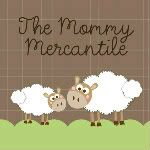With Christmas and New Years coming up, I thought I'd post some tips on candy making.
Tonight I decided I'd make caramels. I've made them before successfully, so I wasn't too worried. I didn't have any corn syrup on hand, so I used a different recipe that didn't call for corn syrup. I put the ingredients in the pan, and while I was waiting for it to heat up, I ran upstairs to get my thermometer out of my cooking kit for my foods lab. To my dismay, the thermometer I have only goes to 220 degrees, and my recipe said that the caramels would be done at 250 degrees. So, I thought I'd just hope and pray, and eyeball it.
Fast forward to pullling the caramel out of the fridge, and it's a hard, grainy brick.
I looked up "how to fix grainy caramel" on google, and I got 3 answers. One, heating up the grainy mess in a double-boiler can melt the sugar crystals. I still had a grainy blob of caramel-flavored sugar. Second answer, adding corn syrup prevents sugars from crystallizing. *Sigh.* Now I wish I'd known that before endeavoring to make the darn candy. Third, and most devastating, was that cooked and grainy caramel can seldom be fixed.
So, I learned that making caramel can be as temperamental as working with chocolate. I groaned, mourned, stabbed the sugary ball with a wooden spoon a few times to let out my frustration, and with the same emotion I'd use for flushing a fish down the toilet, I pushed the sugary caramel into the disposal and said my goodbyes. My poor attempt at caramel, may you rest in peace.
And on that same note, I'll post a few tips I've learned while making other candies.
With divinity, it should be made on a day with clear skies and a dry kitchen, since humidity can make it fail. Also, to get the desired fluffiness of the candy, make sure you whip the egg whites (with no fat or yolk in it!) to a stiff peak, and ever-so-gently fold in the other ingredients. How do you fold in ingredients? Using a large rubber spatula, scrape from the bowl, starting from the side furthest from you and sweeping it clockwise toward you. Here's a great video demonstrating folding in whipped egg whites:
When working with chocolate, make sure when you are melting it, such as for dipping, that water never comes into contact with the chocolate. What happens when water touches melted chocolate is called seizing. This can also happen when chocolate is melted for too long, such as when it is melted in the microwave. Seized chocolate gets hard, becomes bitter, loses its molecular structure, and cannot be re-melted. It is ruined, and all you can do is scream, groan, moan, cry, and try again with new chocolate.
I hope these tips help you when making candies. Good luck, and Merry Christmas!
Elf on the Shelf Christmas Pancakes
2 months ago



0 comments:
Post a Comment